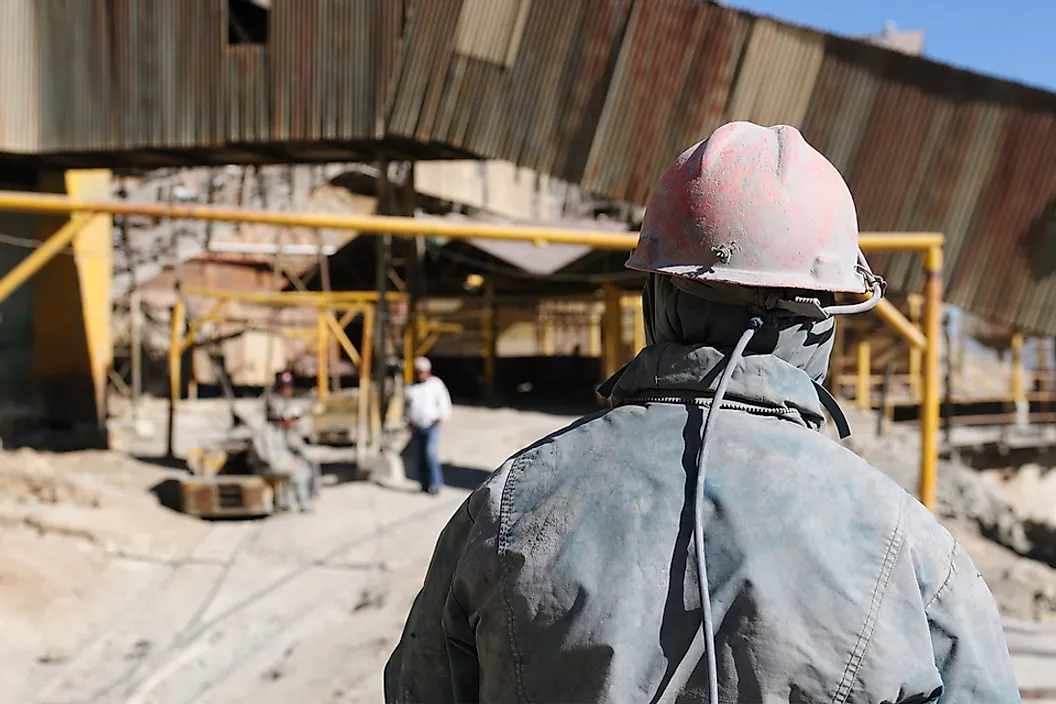What Are the Biggest Industries in Bolivia?

Bolivia’s economy is the 95th largest in the world in nominal terms and the 87th largest in terms of purchasing power parity. The country is classified as a lower middle-income country by the World Bank and has a human development index of 0.675, ranking it 119th in the world. Although the country is rich in natural resources, its economic development has been limited due to several factors, including political instability and high rates of inflation. Bolivia's economy has historically been single-commodity focused. Bolivia has several industries that play a significant role in the economy. These are discussed below.
Manufacturing Industry
Manufacturing accounts for approximately 15% of Bolivia’s gross domestic product. The sector has grown since the 1950s, but remains relatively small. Most manufacturing is small-scale, and primarily serves regional rather than national markets. The largest segment within the manufacturing industry is food processing, accounting for 39% of the industry. Food processing is continuously growing, both in terms of production and job creation, and made up 14% of total exports in 2010. Soybeans and its processed derivatives dominate food exports, reaching a large export market. Other notable manufacturing goods include cement, shoes, furniture, and a wide range of goods aimed at meeting domestic market needs. Most manufacturing industries are located in La Paz, Cochabamba, and Santa Cruz.
Mining Industry
Bolivia’s mining industry gave the country’s economy a major boost in 2009. The industry grew by 13% that year, and most growth is attributed to increased production by other industries. The mining industry accounts for about 4% of Bolivia's GDP. Following the collapse of world tin market in the 1980s, the Bolivian government reduced its control over mining, and now operates only a small part of the industry. Natural gas is currently Bolivia’s most valuable natural commodity. However, a lack of infrastructure and a conflicting role of government in the control of natural resources have slowed the exploitation of the resources. The production of gold and silver has also increased over the years, with Bolivia extracting over 10,000 kg of gold and 461 tons of silver. Additional, zinc production has increased, with more than 100,000 tons extracted annually.
Textile Industry
The textile industry has enjoyed stable growth in recent years, leading to export earnings of more than $30 billion. Because of the worldwide financial crisis, the textile industry went through a period of crisis, resulting in a 7.7% fall in exports in 2009. However, free trade agreements with the United States and other Latin American countries mean the Bolivian textile industry can now access nearby markets. In 2009, the Bolivian and Brazilian governments signed an agreement allowing Bolivia to export over $20 million worth of textiles without tariffs.
Service Industry
The Bolivian service industry is dominated by banking and finance. The banking sector has undergone a series of reforms, which have improved the sector. There are nine private banks in the country, which are regulated by the Central Bank of Bolivia. Most Bolivian bank deposits are held in US dollars. Major bank lending goes to manufacturing, property services, and trade and retail.
Tourism is also an important service industry in Bolivia, as a large number of foreign tourists are attracted to the country’s natural attractions. Bolivia’s major tourist sites include Lake Titicaca and Indian villages. Bolivia receives over one million tourists every year, and number are expected to increase following the country’s return to political stability.











